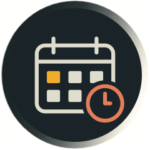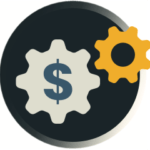Conversational marketing:
Making B2B Marketing More Human
Recently, my colleague presented a lunch hour with our team to discuss the capabilities of Drift, a conversational marketing platform. He also passed along a webinar invite demonstrating the Driftbot in action. What I thought would be a sterile and annoying interaction (flash back to the Microsoft paperclip… I mean, “Office Assistant”) actually felt quite personable and warm. I much preferred it to the standard eight-field form that is often the biggest barrier to driving leads – not to mention, a process that’s becoming obsolete as people demand more consumer-like, engaging experiences.
The application of chatbots has been a hot topic here at WHM — as well as in the larger advertising/marketing world — for several years, but it wasn’t until recently that I discovered, compliments of HubSpot1, just how effective bots can be at boosting engagement, conversion, and lead quality.
- Increased sales – 53% of buyers are more likely to buy from a business they can message (Facebook).
- Increased qualified leads – A combination of conversational marketing and chatbots can result in 182% more qualified leads (HubSpot).
- Boost conversions – Website visitors who chat to a business first are 82% more likely to convert to customers (Intercom).
- Satisfy customer demands – 82% of consumers rate an “immediate response” as important or very important when they have marketing or sales questions, and 90% rate it that important when they have a customer support issue (HubSpot).
Strong stats like these indicate marketers’ success at removing friction from engagement efforts, as well as a preference to transform blah-blah B2B marketing into more personal B2C-style experiences.
Wondering where to begin with chatbots?
Here are five great ways they can augment your marketing toolkit:
1. As an alternative to traditional lead-generation landing pages and pop-up forms, to help with navigation and conversion.
Many users get fed up with detailed forms (we’re busy people, after all!), and the chatbot can act as a safety net for hurried visitors, coaxing their information out in a much more natural, conversational and proactive way. We’ve seen a 3x conversion increase at this critical point of connection.

2. To qualify prospects before sending a lead to a rep.
Chatbots can answer questions using pre-defined scripts, alerting the appropriate rep when a prospect signals interest in taking the next step.

3. To enable prospects displaying high levels of intent to get to a rep quickly.
Pricing pages, for example, are typically high intent pages signaling readiness to purchase. Rather than require people to fill out a form and wait for a rep to get in touch, use a bot to let them skip the line and book an appointment on the spot.

4. To provide ultra-white-glove service to your highest value accounts.
The bot can detect when a top account is on your site and alert the rep who owns the account – enabling your staff to jump right into the conversation.

5. To convert paid traffic by recommending a tailored asset or offer.
Based on visitors’ search terms or other collected data, you can serve up a topical case study that’s in-line with their interests or elevate a comparison sheet when you know which product they’ve been considering. According to a McKinsey & Company article2, serving up a highly personalized and relevant content can reduce acquisition costs by as much as 50% and increase revenue by up to 15%.
While chatbots aren’t new, B2B marketers are finally realizing the massive potential of conversational marketing to build better pipelines, faster.
Are you maximizing your martech stack with a chatbot that all but guarantees, at minimum, a 2% increase in conversion? Give us a shout if you’re interested in hearing more.
